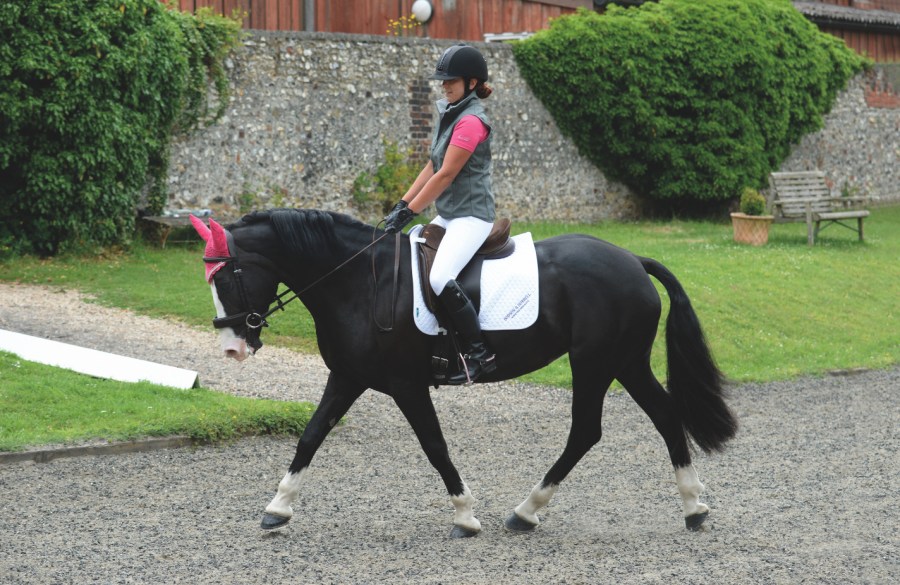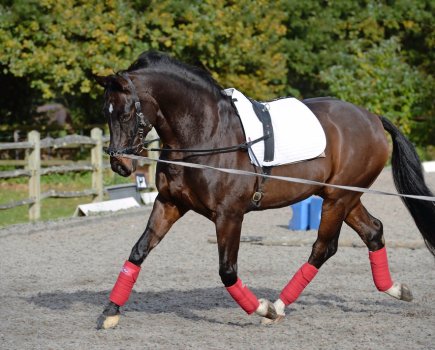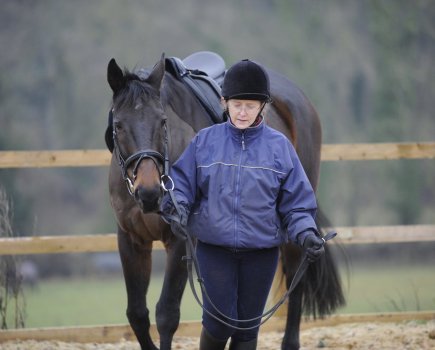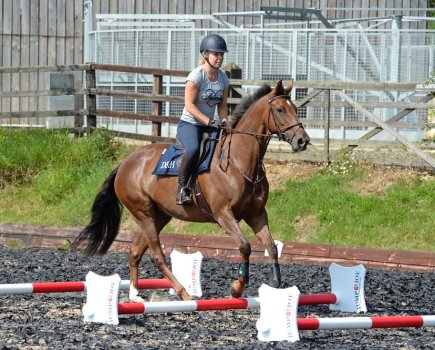It’s easy for an instructor to say ‘make your horse rounder’, but what does it actually mean and how do you do it? Coaches Ian and Heidi Woodhead share the three key things to consider when it comes to getting a horse round.
Rounded, not resisting
When a horse exhibits resistance, the rider’s reaction may be to apply force to try to make the horse work on that rein, rather than exploring exercises that will increase their suppleness. However, forcing a horse will never have a positive long-term outcome and may make them resist schooling even more. Your horse will never be supple unless they are submissive and soft in the contact. To be soft in the contact, they must be ‘round’.
Sometimes when you’re training you may feel your horse has become strong or numb down the rein. It’s easy to assume that they have gone stiff or evasive in the mouth. However, more often than not, the reason is that they’ve become blocked at the base of the neck or poll. It’s very easy to fix this just by returning to the three points of roundness, and getting your horse’s suppleness back on track.
To make a horse round, there are three things to consider – all of which are achievable through your leg and rein aids.
1. Mobilising the neck
The most important part of your horse to be controlled is from the base of their neck (the first six inches in front of the withers) to the poll. If you teach your horse to keep that part of their neck ‘open’ (working forward and round, and not coming back at you), you then release the handbrake to the horse’s body. Without this being achieved, you will always end up going back to the same point of resistance.
2. Relaxation through the poll
The second point of roundness is to ensure that your horse’s poll and jowl are relaxed and submissive. Again, this is achieved through leg and rein aids, and developing your ability for ‘feel’ in the rein.
3. Maintaining a good contact
The third point of roundness is the quality of contact through your horse’s mouth.
True roundness is achieved when the neck, the poll and the contact all work together and remain soft. You can then start to work on exercises with your horse to develop suppleness in their body from the hindleg through to the contact, at all times paying attention to the three points of roundness.
It’s important to remember that for the feel to be correct, your horse must be working in front of your leg in order for them to be committed to the contact.
When the rider has achieved this feel, the mechanics of the horse’s body will be ready to perform numerous exercises to create and develop suppleness.
Meet the experts: Ian Woodhead was the National Under 21 dressage trainer for 18 years, during which the dressage pony team won 10 European Championship medals. He now trains top international event riders, and many other British and Irish senior squad members. Heidi Woodhead (née Simmons) is well known on the eventing circuit as an international rider, a producer of young horses, and a BHSI and British Eventing accredited coach.
Photo credit: Kelsey Media/Matthew Roberts










